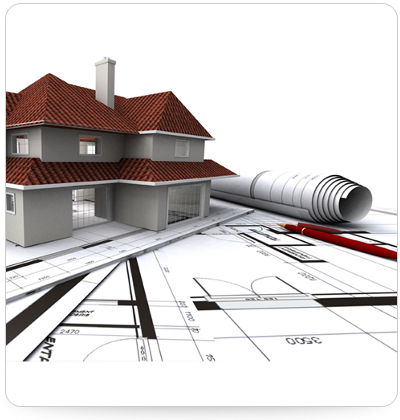I can only imagine the insane things I’d do to a house if I were building from the ground up. If I had an unlimited budget to build my dream house, I’d have crystal chandeliers, a rockin’ outdoor entertaining space, a 3-story indoor slide , and a walk-in closet the size of an Olympic swimming pool. Also, don’t forget about state-of-the-art home cinemas. Now I’m sure very few of you have that kind of budget to play around with, but with all the options that come with designing your own site, all your dreams are right at your fingertips. The downside is that making these decisions is very stressful when such a large wad of cash is at stake. If you’re planning on building your next home, you might be wondering how to get the process started. Whether you are building a cosy cabin or an expensive castle, here are some suggestions that I hope will help you get started building your very own dream home.
Determine how much you can afford
The first step to building your new home is to determine how much you can actually afford. The amount of home you get for your dollar varies by a myriad of factors, from the cost of your builder, to the type of layout, to the cost of labor and materials. A house that is built on a slope could be more problematic and expensive to build than one on a flat surface. On the other hand, building a square or rectangular house with a few odd angles and curves will be less pricey than a complex custom layout with twists, turns, and turrets.
If you’re going to be financing your new home, you should talk to a home loan expert and get pre-approved. Then comes the tricky part: you need to figure out how to handle all the costs involved. You should build your budget before you even think about any other process. This will help you keep your costs to a manageable level and understand where your money will be going.
According to BuildMax , a home consulting firm, your first budget estimate will be a way to help you consider options for your project. A budget will help you identify all your design options and understand what is and isn’t within your means. Here’s the process BuildMax recommends to develop a budget.
- Set your priorities. What is very important to you? Is it an expensive kitchen? Multiple bedrooms? Home office? Make a list of everything you “must have” and calculate the likely costs.
- Figure out your trade-offs. Maybe you want an all marble kitchen but realise that it has a heftier price tag than you realise. What would you be willing to lose instead? Is a fancy kitchen more important to you than the library you wanted? Would you like to scratch one or the other off your plans?
- Complete the cost-benefit analysis. Figure out what is and isn’t worth the cost. When you go to sell your home, is the pool going to be worth the cost to secure? Are you going to get a significant return on investment for certain features in your home?
When you’re constructing your budget, don’t forget to factor in the outdoor features that you’re planning on adding. This is especially important for the allowance for landscaping , if you are going for that “fresh-from-construction-lot” dirt-and-boulders look.
Pick builder
The key to designing your new home is communication with the builders and designers who will be involved in the project. You should involve just as much care in choosing your builder as you would in picking your floor plan and location. There is nothing more important than finding a reputable builder who will build you a quality home.
Make sure you do your homework when you’re looking for builders. According to the National Association of Home Builders , there are a few ways you can identify potential builders:
- Contact your local Home Builders Association for a list of builders in your area.
- Check the real estate section of your local newspaper for builders and projects. This can help you find out what builders are doing in your area, as well as what are building homes you like that are in your target price range.
- Ask your local estate agent , as well as friends and relatives.
If possible, you should try to talk to homeowners who have had homes built by the companies you are considering. The builder may even be able to give you pointers on homeowners who would be willing to talk to you about their experiences.
Try to see new homes as much as possible. The building company could host home shows and open houses. You should use these facilities to view the quality of construction, including the quality of cabinetry, finish work, carpet, and paint.
Ask lots of questions and don’t ever think that your question is too irrelevant. You should ask about guarantees, terms, licensing, business experience, and much more. I found a great list of questions on Dear Monty, the property advice column, and you can see the full list here . Take your time when choosing a builder, and most of all, be thorough!
Choose your floor plan and scraps
Choosing a floor plan can certainly be daunting. The first thing to ask yourself is whether you want to use a customised floor plan or a pre-drawn one. Pre-prepared plans are much cheaper and can usually be delivered within a few days. On the other hand, bespoke floor plans typically cost around 5-10% of the cost of the home, and take weeks or months to deliver.
You then need to settle on the main features of your dream home. Maybe you and your partner have different ideas about what your dream home entails. Together, you need to compromise on multiple bedrooms, bathrooms, and any unique features you’re interested in building. Your lifestyle and plans for the future should be key factors in your decision on a floor plan. If you are a young family and planning on having more children, you might want to include extra bedrooms. If you’re planning on moving into a new house, perhaps a ranch-style house will allow you to extend the use of the home into your golden years when your mobility may be limited.
There are a number of basic building choices that can really jack up the cost of your new home. Choosing a two-storey home over a ranch-style home usually costs less because you use less material per square foot. The type of foundation can have a significant impact on the cost of your home; a concrete slab costs less, and basement foundations are the most expensive.
When building your new home, you might also consider making it a “green” home. Energy Star homes are much better for the environment but can cost around 4-8% more initially. You will however experience many benefits from having an energy efficient home , including improved air quality, better comfort and temperature in your home, and most of all, reduced energy bills. Although the initial cost is higher, it will probably pay for itself over time and may even raise your asking price when you are ready to sell your house.
If you build a new home, congratulations! It’s an exciting process. By doing your homework, and coming to the table with a set budget, you can more easily navigate the process and make it much smoother for yourself, and the builder.






